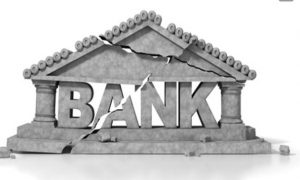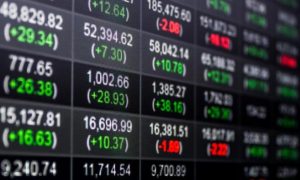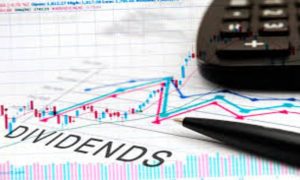Cash isn’t just the dollar bills you put in your pocket — in this market, it might seem to be a patch of steady ground.
There are multiple options: People can put their money in high-yield savings accounts, checking accounts, money market mutual funds, certificates of deposit and short-term Treasury debt.
Also Read– Gov. Whitmer announces amount for proposed ‘Inflation Relief Check’
As a super-safe alternative to equity markets, these investment vehicles are positioned to reap higher yields from higher interest rates. They may sound like reassuring places to park money while recessions worries persist, and as stocks and bonds try to recover from 2022’s pummeling.
High-yield online savings account are averaging 3.3% annual percentage yields (APY), up from less than 0.5% one year earlier, according to DepositAccounts.com. A one-year online CD is averaging a 4.4% APY, up from nearly 0.6% a year ago, the site said.
The average seven-day yield for the 100 biggest money market funds stands at 4.34% and it hasn’t been this high for more than a decade, according to Crane Data, which tracks the industry. With maturities under a year, Treasury bills are fetching yields at or above 4.5%.
Also Read– Column: Mike Pence, would-be president, has a plan to kill Social Security. It will cost you
Of course, those numbers aren’t outrunning inflation. December’s yearly inflation rate was 6.5%, down from a pandemic-era high of 9.1% in June 2022.
But consider these cash returns compared to the performance on the stock market. Even with January’s strong start, the Dow Jones Industrial Average is down more than 4% year over year. In that time, the S&P 500 is off 9% and the Nasdaq Composite lost nearly 17%.
A major part of the downward pressure has been the Federal Reserve’s fast-paced increases for its benchmark interest rate. The Fed hiked its key rate by 25 basis points, a quarter of one percentage point, last week and chairman Jerome Powell has said more increases are needed to help puncture inflation.
“There is more curiosity about cash,” said Meagan Dow, senior strategist for Client Needs Research at Edward Jones. “Any time we see market volatility and investments start to seem less certain, cash starts to feel more comfortable and feel more secure as a place to put your money.”
Also Read– Gold giant Newmont’s $16.9 billion bid for Australia’s Newcrest clouded by deal doubts
Financial adviser Ryan Greiser said he was surprised at how much idle cash from clients was waiting for more productive use. He’s not lowering stock and bond allocations, but he’s putting the extra money in short-term CDs and Treasury bills. “Cash is the cool kid on the block right now,” said Greiser, a certified financial planner with Opulus, based in Doylestown, Pa.
Financial planner Ryan Greiser said he was surprised at how much idle cash from clients was waiting for more productive use.
Take it from Ray Dalio. “Cash used to be trashy,” the founder of the massive hedge fund Bridgewater Associates said in a CNBC interview last week. “It’s attractive in relation to bonds. It’s actually attractive in relation to stocks.”
John Boyd, founder of MDRN Wealth in Scottsdale, Ariz., disagrees. Cash isn’t trash for him. It’s a “trap.”
“One of the biggest mistakes I am seeing investors make right now is shifting out of depreciated stocks and bond funds to take advantage of higher yields in [high-yield savings accounts], money market funds and even short-term CDs,” he said.
Take advantage of the higher rates for rainy day funds and reserves, Boyd said — just don’t go overboard. Cash still doesn’t have “double-digit growth potential like stocks do,” Boyd added.
There are four reasons to hold onto cash as a liquid asset, Dow said. It’s for everyday spending, emergency savings, a large upcoming expense like a down payment on a home, and for part of an investment portfolio.
Dow said Edward Jones generally recommends having no more than 5% cash exposure in an investment portfolio, Dow said. “You don’t want too little, but you don’t want too much either,” she said.
A “cash management plan” is an important part of financial and investment planning, said Rob Williams, managing director of financial planning, retirement income and wealth management at the Schwab Center for Financial Research, a division of Charles Schwab & Co.
It’s common to hear financial experts describe cash investments as a spectrum of choices where there’s a trade-off between returns and liquidity.
With that said, here are places to park your extra cash:Checking and savings accounts
Some checking accounts bear more interest than conventional checking accounts. But there are caveats, explained Ken Tumin, senior industry analyst at LendingTree and founder of DepositAccounts.com.
Many high-yield checking accounts require a minimum number of transactions for the APY to kick in, typically between 8 and 20, he said. There are often cash limits on high APYs, typically between $10,000 to $25,000, he added. So if you want to park money above those caps, it won’t generate the same amount of interest as a high-yield savings account, he noted.
Also Read– How To Save $10,000 in a Year: 10 Steps
“In many cases, the rate advantage for high-yield checking over high-yield savings account might not be worth the effort,” he said. But the rate advantage between the savings accounts at “brick and mortar” banks and online banks is notable, he said.
Tumin cited FDIC data, which shows the national average rate for savings accounts was 0.33% through mid-January. Without the overhead costs of brick and mortar competitors, Tumin said online banks offer up to 4.20% interest on some savings accounts as they look for an edge on competitors.
Brokerages also offer “sweeping” services, which sweep uninvested money earns interest while it sits around for the next trade.
For example, Robinhood sweeps uninvested cash of eligible customers to a deposit account at a network of banks, with a 4.15% APY as of early February. Fidelity Investments automatically puts the cash into money market funds that, as of early February, were producing 4.14% seven-day yields, a spokeswoman noted.
At Interactive Brokers idle cash balances over $10,000 can stay in an account and accrue interest. The formula is based on the federal funds rate minus 50 basis points, said Steve Sanders, executive vice price of marketing and product development. For now, that’s a 4.08% rate.
Also Read– The housing market correction, as told by 4 charts
Money market funds
Money market funds occupy a middle ground, Williams said. The yields can run higher than savings accounts, though it usually takes a day to redeem your holdings, he noted.
These mutual funds are comprised of ingredients like short-term, high-quality federal government and municipal debt, along with high-grade corporate debt that quickly comes due.
By the end last year, money market funds had $5.2 trillion in assets under management, according to the Treasury Department’s Office of Financial Research. That’s well beyond the funds’ $4 trillion in assets under management by February 2020, the data shows.
It will be a couple weeks before the latest 25 basis point hike is fully reflected in average yields, according to Peter Crane, president of Crane Data.
The last time the biggest money market funds averaged seven-day yields surpassed 4% was in December 2007, according to Crane Data’s statistics. “Their biggest weakness is now their greatest strength. They follow the Fed,” Crane told MarketWatch.
Also Read– Column: Mike Pence, would-be president, has a plan to kill Social Security. It will cost you
As the spread in yields from many savings accounts and money market funds widen, consumers would do well to pay more attention to these vehicles, said Kyle Simmons, founder and lead financial adviser at Simmons Investment Management in the Denver area.
Ultra short-term ETFs are another option, he added. Like money market funds, they give exposure to government and high-quality corporate debt that matures quickly.
But don’t confuse money market funds with money market accounts. The two are completely different, Tumin said. A bank’s money market account is akin to a savings account, he noted.CDs and Treasury bills
Treasury bills and CDs lie on the other side of the cash spectrum. They have maturity terms from 4 to 52 weeks. Yields may be higher than money market funds, but you must wait longer to get your money back.
The market yield on a one-month Treasury bill currently surpasses 4.6%, according to Fed data. The last time the yield, on a rolling basis, exceeded 4% for one-month T-bills was October 2007, according to St. Louis Fed data.
Also Read– Gold giant Newmont’s $16.9 billion bid for Australia’s Newcrest clouded by deal doubts
Investors can buy Treasury debt of varying lengths through their broker or at TreasuryDirect.gov. (TreasuryDirect is also the place to purchase popular I-bonds, but they cannot be purchased on the secondary market.)
The interest from T-Bills are subject to federal income tax, but they are exempted from state and local taxes, said Greiser. That can provide “an edge over CDs, depending on the interest rate differences and an individual’s tax situation,” he said.
The secondary market for T-bills is larger than it is for CDs, and that makes an early exit easier if you need the money before maturity, he noted.
One tactic for CDs and longer maturity T-Bills: Buy them with the view that interest rates will come down while the money is tied up. (“In our view, we are not in that climate right now,” Williams said. At the Fed, Powell has said rates will have to be “higher for longer.”)
Of course, money parked in a T-Bill or CD temporarily stays on the sidelines for better or worse. “If the market takes off like a rocket during the time you park your money, well, you might feel a little left behind. That’s the price you can pay for low risk,” Greiser added.
Any sort of money maneuvers in CDs or elsewhere should not cloud the overall goal for this portion of a person’s wallet and portfolio, Williams said. “Cash is ultimately for yield and stability, the safest part of your financial life.”

































